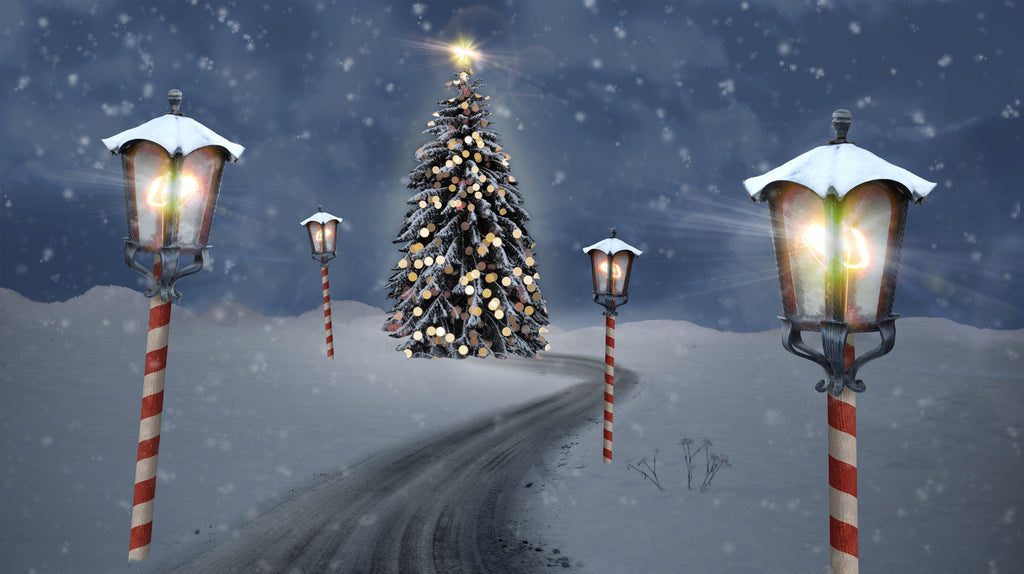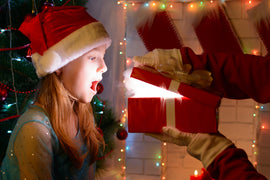
Why does Santa live at the North Pole? How did elves become his helpers? And where did the reindeer come from?
Christmas and its characters have enchanted families for generations. But how did the North Pole become the center of Kris Kringle’s universe? Today we will explore a very short history of some of our Christmas favorites!
Santa Claus
There are several legends blended together that create the jolly old elf we know so well today. The biggest influence is, of course, Saint Nicholas of Myra, a fourth-century monk turned saint from Turkey. Orphaned as a child there are many stories of his generosity. One such story says he threw gold into the house of an impoverished father to take care of his three daughters. Some say the gold landed inside of stockings hung by the fire to dry… inspiring another common Christmas tradition!
It is said sailors passed on stories of his kindness and generosity as they sailed around the world, spreading hope. And he inspired one of Santa's well-known nicknames, Saint Nick!
The North Pole
So if Saint Nicholas hailed from Turkey, why did he relocate so far north? For a while Santa Claus had no known home base. That changed when a cartoon version of Santa by Thomas Nast was published in Harper’s Weekly during the 1860s. Prior to this St. Nick was depicted in a large variety of forms. Nast, it is said, was inspired by Clement Moore’s “A Visit from St. Nicholas” published in 1822. His drawings popularized the version of Santa we are more familiar with today. But Nast did one other thing: he depicted the North Pole as the home of Santa Claus.
Why the North Pole? Well, Santa had already been associated with reindeer (we’ll cover this a little later!). And where do reindeer live? Primarily in the arctic. In addition, just a decade earlier from the premiere of Nast’s Santa cartoons, there were several famous expeditions to the North Pole, yet no one was confirmed to have reached it until 1909. So the mystery and intrigue made it the perfect setting. An enigma based on reality. Just like Santa!
Santa’s Elves
Our elvin friends have a sordid past! Their roots stem from Norse legends of huldufólk, or hidden people. They then found themselves in Germanic, Scandanavian and British folklore. Elves tended to be mischievous beings thought to protect the homes of the good, but would also play pranks on bad people. They were the predecessor to the naughty and nice list! As part of their folklore, these magical creatures made their way into our stories and literature, including William Shakespeare’s A Midsummer Night's Dream.
In fact it was more modern literature that created the elve’s association with Christmas. In “A Visit from St. Nicholas,” author Clement Moore refers to Santa Claus as a “a right jolly old elf.” Then in 1856, Louisa May Alcott (author of Little Women) wrote Christmas Elves. It was never published but indicates the evolution of elves from mischief makers to Santa's helpers.
From there, Christmas Elves were made more commonplace by popular publications like Harper’s Bazaar and Godey's Lady's Book. Both published stories and illustrations that included elves at work in the North Pole.
With each generation, we become more attached to elves and the stories they tell about life at the North Pole. My attachment began during the annual broadcast of 1964’s “Rudolph the Red-Nosed Reindeer”. For my kids, it was 2003’s “Elf”. And currently we are enjoying keeping up to date with elf stories at the North Pole Times. There are always new stories to read and talk about.
Flying Reindeer
So how does a Monk from Turkey end up with reindeer as his primary mode of transportation? This was one of the first elements of our modern day Kris Kringle to be associated with the character.
Once again we look toward the power of the pen! The first known indication that Santa can fly came from American author Washington Irving (best known for Rip Van Winkle and The Legend of Sleepy Hollow). He wrote that Santa was “riding over the tops of the trees” in his book A Complete History of New York in 1809. But there was no mention as to how he was able to do so.
In 1821 a children's poem was published (from an anonymous writer) called Old Santeclaus with Much Delight. In this poem is the first known mention of reindeers claiming, “His reindeer drives this frosty night.”
The fate of the reindeers role on Christmas night was sealed by a very familiar poem. Once again “A Visit from St. Nicholas,” by Clement Moore creates the tradition that is still popular today. He mentions the reindeer and names them. "Now, Dasher! Now, Dancer! Now, Prancer and Vixen! On, Comet! On, Cupid! On, Dunder and Blixem!”
No, those aren’t typos. Dunder and Blixem were on Santa’s original team. Dunder means thunder and Blixem means lightning in Dutch and that is how it was originally published. Later some publishers changed them to Donder and Blitzen, which were the German translations.
And then in the 1949 hit song “Rudolph the Red-Nosed Reindeer” sung by Gene Autry, it is pronounced Donner. But word has it the reindeer himself prefers Donder. He says so in his bio over at the Reindeer Barn.
And speaking of Rudolph? His origin story is much more modern. He was created in 1939 by Robert May, a member of the Montgomery Wards advertising department. They distributed holiday-themed coloring books to children as a promotion, featuring Mays creation, a reindeer with a light-up nose! The store distributed over 2 million books that first year and the rest is history.
No matter how they got to the North Pole, the reindeer are currently prepping for their biggest night of the year by participating in the reindeer games. Read about it here.
For more proof that Santa is real, pick up one of our magical Santa Proof Kits.






